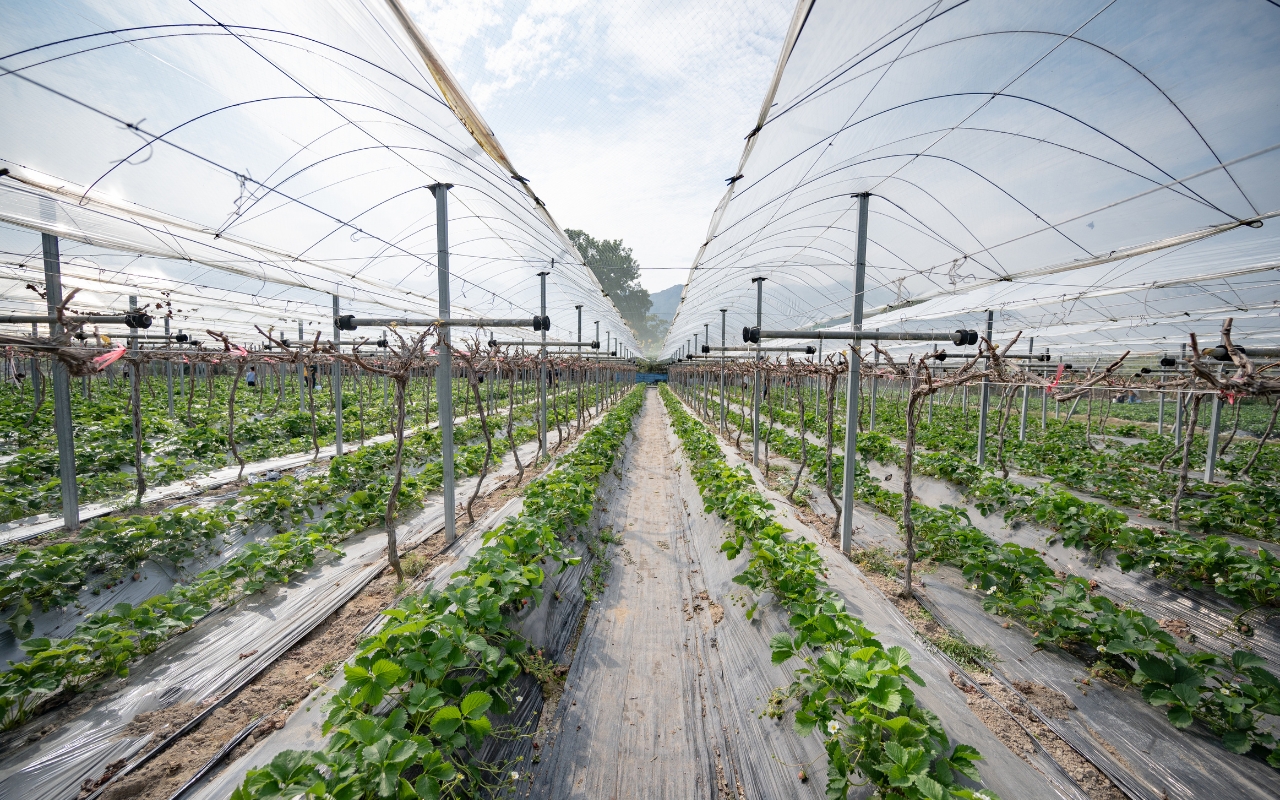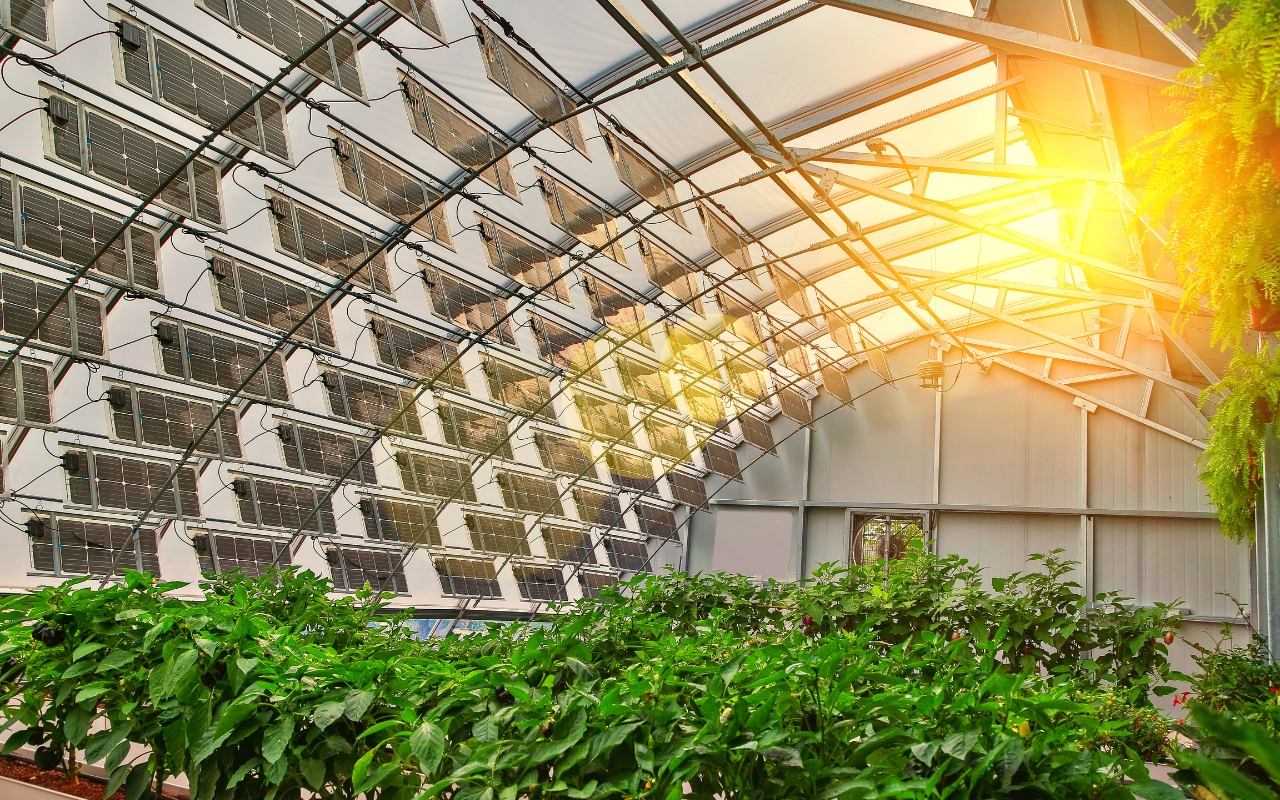Hydroponic Farming in Polyhouses: A Smart Way to Grow Crops

Hydroponic farming in a polyhouse is an advanced method of growing plants without soil. Instead of using traditional farming techniques, plants are grown in a nutrient-rich water solution while the environment is carefully monitored and controlled.
What is a Polyhouse?
A polyhouse is a greenhouse-like structure made of transparent materials like glass or plastic. It allows natural sunlight to enter while trapping heat inside, creating a stable microclimate that:
✔ Protects plants from extreme weather (heat, cold, wind, and rain).
✔ Maintains a controlled environment for better plant growth.
✔ Reduces pest attacks and diseases, leading to healthier crops.
How Does Hydroponic Farming Work in a Polyhouse?
Plants grow in water-based nutrient solutions instead of soil.
Essential nutrients are provided directly to the roots for faster and healthier growth.
The temperature, humidity, and light levels inside the polyhouse are adjusted as needed.


Hydroponic farming in a polyhouse offers many advantages by providing a controlled environment for plant growth. It allows farmers to adjust temperature, humidity, and light to ensure optimal growth and higher yields. This method also uses less water and fertilizer, making it a sustainable alternative to traditional farming.
Key Advantages of Hydroponic Farming in a Polyhouse
✅ Year-Round Cultivation
Crops can be grown throughout the year, regardless of weather conditions.
✅ Higher Crop Yields
With precise nutrient control, plants grow faster and produce more yield than traditional farming methods.
✅ Water Conservation
Hydroponic systems recycle water, using significantly less than soil-based farming.
✅ Better Pest and Disease Control
The controlled environment reduces the risk of pests and diseases, leading to healthier crops.
✅ Efficient Space Utilization
Vertical farming techniques allow for more crops to be grown in less space, increasing productivity.
Steps for Growing Crops Using Hydroponic Farming in a Polyhouse
Hydroponic farming in a polyhouse is an advanced technique that allows crops to grow without soil, using a nutrient-rich water solution in a controlled environment. Here’s a simple step-by-step guide to starting hydroponic farming:
1. Choose the Right Crops
Select crops that grow well in hydroponic systems and have good market demand. Popular choices include:
✅ Lettuce
✅ Tomatoes
✅ Cucumbers
✅ Strawberries
✅ Herbs (Basil, Mint, Coriander)
2. Set Up the Polyhouse
Build a polyhouse structure that allows natural light to enter.
Install systems to control temperature, humidity, and ventilation for a stable environment.
Set up an irrigation and nutrient delivery system to supply water and nutrients efficiently.
3. Select a Suitable Growing Medium
Since hydroponic farming doesn’t use soil, choose a soilless growing medium such as:
🟢 Coconut coir – Retains moisture well
🟢 Rockwool – Provides good aeration
🟢 Perlite & Vermiculite – Helps with drainage and root support
4. Prepare the Nutrient Solution
Mix the necessary nutrients in water to create a balanced nutrient solution.
Ensure the solution contains all essential minerals for healthy plant growth.
5. Plant the Seeds
Sow the seeds in the growing medium and provide the nutrient solution.
Maintain optimal temperature, humidity, and light for germination and early growth.
6. Monitor and Maintain the Crop
Regularly check for pests, diseases, and nutrient deficiencies.
Adjust the nutrient solution and environmental conditions as needed to ensure healthy plant growth.
7. Harvest and Sell the Crops
Once the crops are mature, harvest them carefully.
Sell them in the market and start the next cultivation cycle.
Why Choose Hydroponic Farming in a Polyhouse?
✅ Saves water – Uses less water than traditional farming.
✅ Faster growth – Crops grow quicker and healthier.
✅ Year-round farming – No dependence on seasons.
✅ Higher yields – More crops in less space.
✅ Sustainable farming – Reduces soil erosion and chemical use.
Conclusion
Hydroponic farming in a polyhouse is a modern and efficient way to grow crops without soil. It offers several advantages over traditional farming by using less water, fewer resources, and providing a controlled environment for plants to thrive.
With precise control over temperature, humidity, and nutrients, farmers can achieve higher yields and better crop quality throughout the year. Additionally, polyhouses protect crops from pests, diseases, and extreme weather, ensuring consistent and reliable production.



